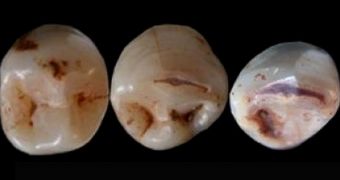While digging in central Israel, at a cave near a site called Rosh Haain, researchers discovered no less than eight small teeth. Subsequent analysis revealed that they belonged to humans, and so this finding is starting to bring into question the origins of the first humans, as well as the time when they appeared.
Anthropologist Rolf Quam, a member of the international study team that made the discovery, published details of the discoveries his team made in Israel in the latest issue of the esteemed American Journal of Physical Anthropology.
The research effort was led by Tel Aviv University (TAU) expert Dr. Israel Hershovitz. His group was also in charge of analyzing the dental evidences recovered from the remote archaeological location.
This particular site is fairly new, in the sense that it was used in prehistory, but was only discovered again in 2000. Since then, the Qesem cave has been under scrupulous investigation, and the efforts are apparently beginning to pay off.
But what experts discovered when analyzing the 8 teeth was extraordinary – the artifacts were very, very similar to those of Homo sapiens (our species), in both size and shape. Still, these objects are considerably older than other teeth found throughout Israel.
“The Qesem teeth come from a time period between 200,000 – 400,000 years ago when human remains from the Middle East are very scarce,” Quam says about the significance of the new work.
“We have numerous remains of Neanderthals and Homo sapiens from more recent times, that is around 60,000 – 150,000 years ago, but fossils from earlier time periods are rare,” he goes on to say.
“So these teeth are providing us with some new information about who the earlier occupants of this region were as well as their potential evolutionary relationships with the later fossils from this same region,” the investigator argues.
The discovery of these teeth – and of the attributes they have – implies that Homo sapiens may have either developed in the near East, or that the species left Africa considerably sooner than first thought.
Anthropologists believe that the earliest hominids to leave Africa colonized Europe after evolving into Neanderthals. The group that stayed behind evolved further into Homo sapiens, and then got out of the continent to colonize the entire world. But that picture now turns out to be incomplete.
“This is a very exciting time for archaeological discovery. Our hope is that the continuing excavation at the site will result in the discovery of more complex remains which would help us pinpoint exactly which species we are dealing with,” Quam concludes.

 14 DAY TRIAL //
14 DAY TRIAL //